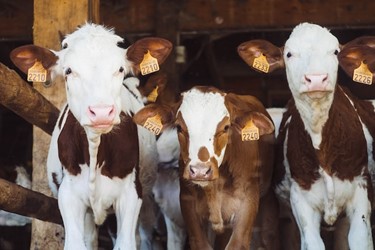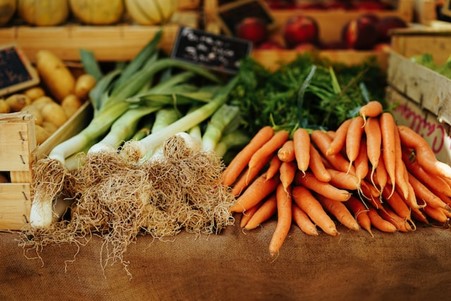Tim Kealy runs a small regenerative farm in his New Jersey town. In the following article, Tim Kealy discusses how this farming practice helps to preserve ecosystems for future generations, while creating healthy animals, products, and crops.
As the world’s population grows, so does its demand for food. However, over farming and other non-regenerative agricultural practices have been degrading arable soil. This decreases food production and contributes to climate change.
Adopting regenerative agriculture practices can preserve ecosystems and biodiversity as well as maintain food production. Regenerative practices can also reduce the levels of greenhouse gases released into the atmosphere.
Tim Kealy says that practicing regenerative agriculture will be crucial to ensuring future generations have sufficiently nutritious food, among the plethora of other benefits, as discussed below:
Tim Kealy on the Regenerative Ag Focus
Regenerative or, in other words, sustainable agriculture is an approach to farming that focuses on minimizing the harm to the pasture fields, rotating animals through various paddocks, and no-till gardening. Agriculture is naturally long-term focused, but this approach takes this a step further.
Tim Kealy explains that less conservation-minded farming methods pollute water and soil with pesticide use, deplete soil nutrients, decrease microorganism biodiversity, and can even contribute to soil erosion.
To combat this, regenerative ag focuses on a variety of techniques. This makes the processes incredibly varied despite stemming from the same philosophy.
Some more common examples include:
- No-tilling farming/gardening
- Crop rotation
- Use of cover crops
- Holistic grazing management
- Natural pesticides & fertilizers
- Natural buffers
 Helping the Ecosystem
Helping the Ecosystem
Tim Kealy of NJ explains that these conservation processes can seem relatively simple when examined individually. However, the conservation philosophy is meant to work as a worldwide initiative across many agricultural endeavors.
The transformation begins at home, with the local environment reaping the initial rewards of dedicated regenerative efforts. As time unfurls, the wave of change gathers momentum, eventually sweeping across the globe. While the process demands patience and perseverance, its enduring impact is precisely what our beleaguered ecosystem craves. Through regenerative agriculture, we embark on a journey of restoration, sowing the seeds of transformation that will bloom for generations to come.
Given enough time and effort, regenerative agriculture can improve soil health, reduce greenhouse gas emissions, improve crop yields, and foster biodiversity.
Tim Kealy of NJ explains that some of these effects directly result from regenerative efforts, while others are by-products of other goals.
Improves Soil Health
One of the main focuses of conservation is the health of the topsoil. Improving local soil will have many beneficial results, such as nutrient abundance, microorganism diversity, and fertility.
Soil health can be improved through crop rotation, utilizing cover crops, composting, and avoiding chemical sprays.
Moreover, the practice of rotational grazing not only benefits the animals but also nurtures the very soil upon which they tread. As these pasture-raised animals are methodically moved through different paddocks, a harmonious cycle unfolds.
The land, now invigorated by their presence, absorbs their natural fertilization, catalyzing a process of regeneration and revitalization. This vital exchange fosters a synergy between the animals and the earth, breathing new life into the very foundation of our agricultural ecosystems. The result is not only thriving livestock but also enriched, resilient soil that forms the cornerstone of sustainable, regenerative agriculture.
Reduces GHG Emissions
Tim Kealy of NJ says that climate change is the looming threat we have been dealing with for some time. Greenhouse gases are the driving force behind this threat. Regenerative agriculture can help reduce GHG emissions by absorbing carbon dioxide.
With proper setup and maintenance, the planet’s topsoil alone could drastically reduce CO2 in the atmosphere.
Improves Crop Yields
Crops will grow better when the soil is healthy and full of nutrients. This allows them to produce more nutritious harvests in greater quantities. Healthy soil will also help make crops more resilient to drought and other climate issues.
Environmental problems aside, greater crop yields will help feed the world’s growing population.
 Fosters Biodiversity
Fosters Biodiversity
Tim Kealy of NJ says that regenerative methods foster biodiversity in microorganisms and larger creatures. More traditional farms will improve soil health and microorganism diversity. With a more robust microorganism level, all others will be supported throughout the ecosystem.
Other farms, especially those that encourage agroecology or agroforestry, will protect wildlife habitats by mitigating damage. This approach also extends to integrating agriculture into local habitats.
Why We Need Regenerative Agriculture
In a world grappling with the dual challenges of burgeoning population growth and pervasive hunger, Tim Kealy of NJ underscores the pressing need for widespread adoption of regenerative agricultural practices.
While nutritious sustenance remains elusive for many, a shift towards regenerative methods promises to elevate overall health standards.
However, the stakes extend beyond empty stomachs—climate change looms as an existential threat that demands multifaceted solutions. Embracing regenerative agriculture emerges as a crucial frontier in this battle. With experts cautioning that we approach a point of no return, the transformative potential of global conservation agriculture offers a beacon of hope, poised to significantly stem the tide.








